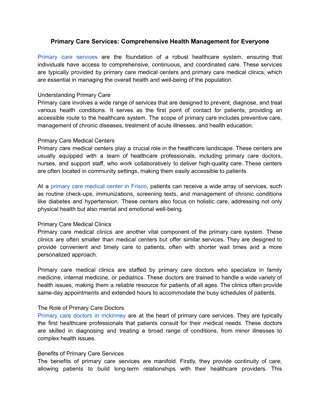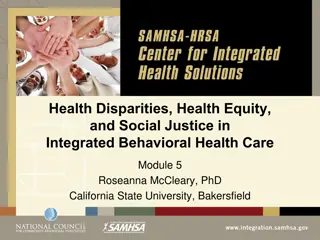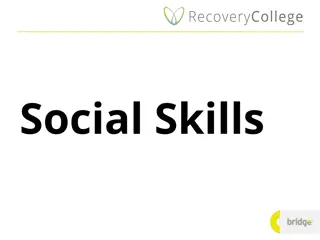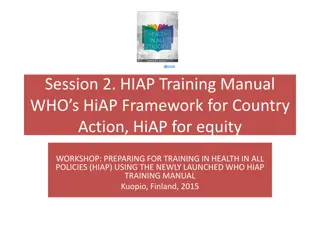Skills & Challenges in Health and Social Care Sector
This project delves into the skills and performance challenges within the health and social care sector, focusing on various occupations like care assistants, physiotherapists, doctors, and more. It highlights current skills challenges, future skill needs, the role of National Occupational Standards (NOS), and implications for the sector. The workforce profile, factors driving skills demand, and specific skills dynamics for key occupations are explored to provide valuable insights into the sector's unique demands.
Download Presentation

Please find below an Image/Link to download the presentation.
The content on the website is provided AS IS for your information and personal use only. It may not be sold, licensed, or shared on other websites without obtaining consent from the author.If you encounter any issues during the download, it is possible that the publisher has removed the file from their server.
You are allowed to download the files provided on this website for personal or commercial use, subject to the condition that they are used lawfully. All files are the property of their respective owners.
The content on the website is provided AS IS for your information and personal use only. It may not be sold, licensed, or shared on other websites without obtaining consent from the author.
E N D
Presentation Transcript
Sector insights Sector insights Skills and performance challenges in health and social care Strategic Labour Market Intelligence - 2015
This project examines skills and performance challenges in the health and social care health and social care sector. Findings are reported in six main sections: Mixed-methods research examined five occupations in depth: Current skills challenges Skills drivers Sector overview - care assistants - care home managers - physiotherapists - doctors - nursing auxiliaries Future skills The role of NOS Implications
The health and social care workforce today The health and social care sector: Largest UK sector employing over 4 million people Provides care and support services ranging from highly-complex acute care in hospitals through to personal care and support in people s homes Predominantly female workforce - just over 20 per cent of the workforce is male Older age profile older and more highly-qualified than the economy as a whole Average weekly earnings lower than the economy average (despite the higher level of qualifications).
Four main factors drive skills demand in the sector Technology and innovation including advances in treatment modalities and use of technology to support self-care. Social and political factors including the push for resource efficiency and structural reform. Changing user expectation of care more person-centred, compassionate, and integrated care. Demographic change increasing overall demand for the services delivered by the sector. Skills and performance challenges in the health and social care
Each key occupation has a specific skills dynamic Care Assistants Core skills are the provision of personal care; although a degree of specialisation is possible within the occupation based on the care needs of users. Skills challenges stem from structural issues such as the relatively low pay, poor working conditions, and growing demands of the role. Care home managers and proprietors A complex occupation which can combine a regulatory role of assuring the quality of care with a commercial imperative of running a business. Current skills challenges derive from these twin roles. Promotion to the role from within is typical (particularly in single- owned homes); as a result, developing leadership and management skills is often required. Physiotherapists An occupation operating across the health and social care economy; an integral part of multi-disciplinary care teams, offering support for patients with numerous care needs. Skills challenges differ depending on whether the role is community or acute-based. Employers report relatively few applicants for jobs, and a flattening out of career progression. Medical practitioners Doctors have oversight over all aspects of medical care. Skills development is characterised by increasing specialisation (with key debates relating to the degree of specialisation required). Predicting future supply of, and demand for, specialist medical services is a key challenge facing employers and policy makers. Nursing auxiliaries The nursing auxiliary occupational group is large and varied in its function and level of seniority. It provides support to clinical professions across the health and social care sector. Nursing auxiliaries influence how patients experience services .Recruiting for values is therefore a key issue. New / adapted roles are emerging within the occupation responding to patient need.
There are sector-wide challenges too, among them, recruiting sufficient staff to meet service demand The sector is growing increasing by over 6 per cent in the five years up to September 2014 It is forecast that over 2 million new workers will need to be trained and recruited into the health and social care sector by 2022 Greatest demand anticipated for nursing auxiliaries and care workers/home carers. Retaining staff with the right values is crucially important employers are looking at how best to recruit for values and to retain their staff.
Supporting progression in the sector is a common goal for employers Enabling progression is important for addressing high staff turnover In lower-level occupations Employers support development within role (to address increased patient demand). Training and competency frameworks will be important. In registered occupations progression often relates to specialisation there is debate over the degree to which this model fully meets patient needs.
Forecasting (in terms of numbers and skills) is a long- term challenge within the sector Supply: Personal choices of staff (work-life balance, part-time working, predictable hours) affect length of training, career and retirement decisions Choice of professional specialism (acute or community; medical specialism) Policy decisions (e.g. relating to wages; reform of training structures) Changing regulation (of professions and services) Demand: Changing patient expectations (so that they are enabled to care for themselves) Greater policy focus on prevention, improved health behaviours and self-management (which may reduce demand) New technologies create new service opportunities
A set of future trends will have implications for the sector s workforce Pressure on resources will lead to further re- design of roles and an increased focus on outcomes Integration of services will impact on skills needs and may make some traditional distinctions between occupations redundant The skills mix of the workforce will evolve as more care is delivered in community locations There is likely to be an increasingly diverse health and social care employer base Implications on the sector and key occupations There will be a growing focus on prevention and population-level health
These implications are already evident across the key occupations New intermediary roles, related to current more traditional occupations (e.g. physician assistants) An amplification of the existing challenge of workforce planning following the increasing fragmentation of the employer base Greater specialisation / fragmentation of occupations (such as nursing auxiliaries) regulation may follow Existing occupations may expand to take on new responsibilities, such as physiotherapists in a public health role, and care home managers overseeing integrated health and social care facilities Occupations will take on more of an enabling role, supporting people to live independently.
In the context of these current and future challenges, occupational and professional standards have a role to play Over half (55 per cent) of health and social care employers have some awareness of NOS This compares favourably to 40 per cent of employers across the entire economy. NOS are relatively well known in the sector They can be used to turn into an educational currency We need some sort of basis and Skills for Care, Skills for Health and NOS are as good as anyone [for this] . They are seen as informing training They set the minimum baseline for the professions The Royal Colleges / chartered societies / professional associations standards tend to be more aspirational . Professional and service regulatory standards are important too
The sector could take a number of steps to address current and future challenges Recommendations: Design dual route training opportunities and qualifications for new entrants to the sector, which would allow staff to pursue a health or social care career path Capitalise on opportunities to share learning on recruitment and workforce planning to aid the delivery of personalised and integrated care Undertake exploratory scenario planning to examine the future shape of health and social care support jobs Share learning on how to engage lower skilled workers in workplace learning Move away from a narrowly-defined, task-orientated NOS and encourage greater use of NOS by national and sector bodies when developing training across the sector
https://www.gov.uk/government/organisations/uk-commission-for-employment-and-skills info@ukces.org.uk @ukces Images sourced from Shutterstock























